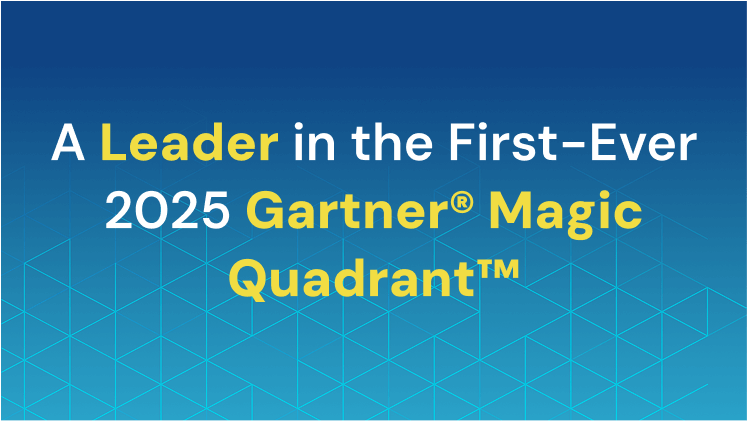
Unlocking the Power of Legacy Data: A Case Study with His Majesty's Courts and Tribunals Service
- By:
- George Tziahanas |
- April 9, 2025 |
- minute read
In the ever-evolving digital landscape, legacy systems often pose a significant challenge for organizations seeking to modernize their data ecosystem. Like many enterprises and government agencies, His Majesty's Courts and Tribunals Service (HMCTS) in the UK faced precisely this issue—managing vast amounts of data across numerous siloed applications, each with varying architectures, security requirements, and compliance standards.
The Challenge: A Fragmented Data Landscape
HMCTS oversees all courts and tribunals across the UK, managing critical judicial processes that generate and retain vast amounts of sensitive information. Some records, such as adoption records, must be retained for a person’s lifetime. This level of data retention, combined with the need to decommission outdated systems, required a strategic approach to archiving and data management. Many of these legacy systems dated back to the 1990s, spanning multiple generations of technology. While some systems were simply outdated, others contained crucial data that needed to be preserved, securely accessed, and managed in compliance with modern regulations.
Addressing Risk, Compliance, and Cost
When assessing how to modernize its data management strategy, HMCTS considered three key areas:
· Risk Management: Security risks tend to peak when technology becomes outdated and gradually decline as systems age out of relevance. However, availability and compliance risks continuously increase over time as support diminishes and regulatory demands evolve.
· Cost Considerations: The cost of maintaining legacy systems escalates as support and resources become scarce. Cloud-based solutions offer consumption-based charging, making it essential to implement a data lifecycle strategy.
· Opportunity for Optimization: Consolidating data from various legacy systems creates new opportunities for efficiency, analytics, and AI-driven insights. By breaking down data silos, HMCTS could enhance governance and improve accessibility.
The 5Rs Framework for Legacy System Management
To determine the best course of action for each legacy system, HMCTS employed the 5Rs approach:
1. Retain – Keep the system as-is if it remains functional and meets requirements.
2. Retire – Decommission the system and discard the data if it is no longer necessary.
3. Replace – Implement a modern alternative while ensuring data migration.
4. Re-host – Move the system to a new infrastructure, such as a cloud platform.
5. Re-platform – Modernize the application while maintaining core functionality.
By evaluating each system against these criteria, HMCTS prioritized the transition process and minimized risks associated with aging technology.
A Data-Centric Approach: Moving from Repository to Resource
Traditionally, archiving has been perceived as merely storing data securely for compliance purposes. However, the modern approach shifts the focus from passive storage to active data utilization. By centralizing legacy data into a unified archive, HMCTS transformed its archive into a valuable business resource rather than a mere repository.
This shift in perspective enables the courts to:
· Maintain accessibility across multiple judicial functions, from criminal cases to civil disputes.
· Enable seamless search and retrieval of historical records.
· Support AI-driven analytics and decision-making processes.
Managing Structured and Unstructured Data
The HMCTS archive handles a diverse range of data formats, from structured database records to unstructured digital assets such as court hearing audio recordings. Every court hearing in the UK is recorded four times, with both transcriptions and original recordings stored for future reference. By leveraging a data-agnostic platform, HMCTS ensures seamless access while maintaining robust security and compliance protocols.
Realizing the Benefits: Cost Savings and Digital Modernization
The new archiving strategy is more than just a storage solution—it serves as the foundation for HMCTS’s broader modernization initiatives. Key benefits include:
· Significant Cost Reductions: Exiting expensive legacy hosting contracts and decommissioning outdated systems.
· Improved Accessibility: A unified portal with simplified access to historical judicial data.
· Enhanced Compliance and Governance: Standardized data models that align with contemporary regulations.
· AI and Analytics Enablement: Unlocking new insights and efficiencies through machine learning and data science applications.
Conclusion: The Future of Data-Driven Justice
The transformation of HMCTS’s legacy data infrastructure exemplifies the power of strategic archiving. By adopting a data-first mindset, organizations can not only meet compliance requirements but also harness their data for greater operational efficiency, cost savings, and future innovations.
For other organizations facing similar challenges, the key takeaway is clear: legacy application decommissioning is not just about shutting down old systems—it’s about unlocking the hidden value within your data and turning it into a business asset for the future.
.png)
Webinar
Decluttering Your IT: Why It's Time to Decommission Legacy Applications
Listen to this case study and learn how His Majesty’s Courts and Tribunals Service tackled one of the biggest challenges in digital transformation—managing vast amounts of critical legacy data while ensuring compliance, security, and cost efficiency.



